|
While enjoying the fresh cherries picked from our own tree today, it occurred to me that cherry red is one colour which seems to permeate fashion images throughout the centuries. It is one of those hues that requires panache to wear, and a certain level of self-assurance, perhaps even courage. Yet it's been embraced by every era I can think of, and is always ready to make a statement about its wearer, whether as an entire gown or costume, or accessory. The men haven't been left out either! One thing that seems to be forgotten these days is that cherries -- the standard old-fashioned kind -- were cherry red! That is, not the deep burgundy seen on the shelves of most grocery stores today. Consumer demand has narrowed selection of most cherries to one or two dark types, the Bing varieties. Here in Canada, these enormous, sweet, mild cherries arrive in mid-July from orchards in the Okanagan or Ontario. Here in southwest Nova Scotia there used to be cherry orchards everywhere, but no one wants those slightly tart, flavourful red cherries anymore. They now mostly feed the birds. My interest in this little survey of fashion is of course not the fruit itself, but the traditional cherry red colour. First though, it's important to distinguish cherry red from other reds. Anyone with fine arts training (as I've had) will understand that the only true, foundational red is magenta. It is one of the three colours that can be combined to make up all the rest, the other two being true yellow and cyan (blue). Cherry red is magenta with a good dash of yellow, and just a hint of blue, making it a very bright, true visual red. Where scarlet is on the orange end of the red spectrum, and crimson decidedly on the blue side, cherry red is right in the middle -- a saturated, strong, vibrant and clear shade of red. To illustrate the colour difference, here side by side are a scarlet man's coat, and a cherry red one, both from approximately the same era (ca. 1750-60), on the left in wool, on the right in cherry-red velvet: Can you see the difference? The colour at left has far more yellow/orange in it, and the suit at right more of a bluish tone. The classic British "redcoats" and the Canadian RCMP's "red serge" are both scarlet (the colour on the left). Perhaps cherry-red was considered a bit too foppish for a uniform. Strength and power were the messages of a scarlet uniform, whereas a cherry-red suit said wealth and ease. It must be acknowledged of course that natural dyes (including the pigments used by painters and fashion illustrators) may have altered over time, so when looking at the images below, keep in mind that they may have been even brighter and more saturated when new than they are currently. It's also important to recognize that digital monitors capture and display colours slightly differently. Amazingly though, there are many paintings of people dressed in cherry-red, or surviving examples of garments themselves, that retain much of the "punch" of that bright red hue. Here then is a brief survey of some fashionable cherry-red garb through several centuries. A clear cherry-red would have been a costly colour to achieve during the Middle Ages, and a red velvet gown would have been the mark of wealth and status. Bright, clear red was also used on insignia and in decorating of all sorts (as on the horse in the illustration above). Red in various shades was featured in many illustrations of aristocratic garb of the era, as in the painting below of the noblewoman in a procession (note a monk also wearing red), and the charming scene that follows from an illuminated French "book of hours". There, the lady wears a cherry-red head-dress and the man a matching cherry-red coat and hat. Red dyes were certainly not available only to the wealthy, as linens and woollens could be dyed in various shades of red by natural vegetable dyes and processes available to the lower classes. However, the dyeing of luxury fabrics such as silks and velvets into good quality red hues demanded both the skill and the cost (in dye stuffs) that would be beyond the reach of the ordinary person. Sumptuary laws also restricted certain textiles and colours to specified social classes for centuries throughout much of Europe. Once we reach the age of the Renaissance and the Tudor era (in England), clear, bright red garments begin to appear in numerous paintings, primarily of the wealthy and aristocratic. During this period, cherry-red was shown being worn not only by women, but also by important men. The "cardinal" red of the high clergy was a different sort of hue though, closer to a true scarlet than cherry. Following is a well-known example of a cherry-red gown of this period (this is a portrait of Mary Fitzalan, Duchess of Norfolk, ca. 1555. It's arguable that this magnificent velvet gown may be more scarlet than cherry-red, but alteration of painters' pigments (as well as the vagaries of digital viewing) make it difficult to know for certain. It's only once we arrive at the late 17th and early 18th century that representations of colours are more reliable, partly because there are not only more paintings of people other than royalty, but also because fashion illustrations and textual descriptions begin to exist. Cherry-red -- both as entire garments and as trim and accessories of various sorts -- appeared in many paintings and illustrations in the era of the Sun King, Louis XIV. By the middle to third quarter of the 18thC., cherry-red is seen in numerous portraits and extant garments, both male and female. The colour is often used in accessories, or combined with white in strikingly striped patterned silk, such as the cherry-red and white silk brocade sack-backed gown documented in Nancy Bradfield's book "Costume in Detail". There are numerous accounts of cherry-red stays and petticoats (including quilted ones) during this period, apparently a favourite colour. The existence of a several extant 18thC. stays in museum collections in this hue attest to the fact that it must have held some special charm as a hidden pleasure! Here are just two examples in cherry-red silk brocade (the first English, the second Spanish), along with cherry-red silk satin panniers from a mid-18thC. German collection: Extant gowns in this cheerful, vibrant shade of red aren't lacking during this period either. The Dutch seem to have been especially fond of the colour, as seen in many surviving examples where cherry red is used either as a ground or as part of a floral or checked print. There are contemporary accounts, especially in England and America of the mid-18th century, that demonstrate how popular and fashionable bright red was for outer cloaks such as this one, a fashion forever connected with the European "little Red Riding Hood" tale that had its origins in the 17th century. Cherry-red tones weren't restricted to gowns and cloaks during the mid-18th century. The colour appears in a number of portraits of women in hunting or riding garb: Cherry-red wasn't restricted to women's dress of course. Aside from military dress (which as noted earlier, tended to be more on the orange end of the cherry-red spectrum), the colour shows up in many examples during this period. Toward the very end of the 18th century, this brilliant hue wanes from fashion, swept away by the desire for neo-classical dress, which favoured pale tones in the white and ivory range. Loud reds were out of place except for touches in accessories such as shawls and head-wear. Few paintings or fashion sketches exist during the ca. 1790-1810 period depicting fashions for women all in red. Ah, but red could not be ignored for long! By the 1820's, bright shades of red were popping up in fashion sketches, and were once again warmly embraced by the stylish woman. In fact, cherry-red and other similar red tones were to remain very fashionable throughout the remainder of the 19th century, both for day and evening, outdoor and indoor wear, including riding costumes (and even petticoats). There were some general social rules about wearing vivid reds, especially as gowns for evening, discussed at length in many ladies' journals of the era. This was a colour considered only appropriate for young married women, or young-ish middle-aged dames, not the elderly, and certainly not an unmarried young lady hoping to find a husband. No Victorian mother would permit her debutante daughter to go to a ball dressed in an all cherry-red gown -- it was far too suggestive of loose morals! Red, especially bright red, was the colour favoured by dance-hall girls and street-walkers. If it was worn for evening, it was often "toned down" with white or even pink contrasts, as below: Just as in the 18th century, cherry-red underthings (especially corsets and petticoats) were very popular during the otherwise prudish Victorian era. There are quite a number of surviving examples of this little sartorial "sinful pleasure" in museum collections today, and mentioned in advertisements and articles in ladies' magazines. Here are just two examples: Alas though, pity the poor men! With the beginning of the 19th century came the end of male plumage in brightly coloured suits and jackets (except for hunting/riding wear and military garments). Vivid colours like cherry-red became relegated to the status of minor male fashion accessories such as cravats and ties, which soon became the only really fashionably permissible expression of colour exuberance for men. From the early 1800's onward, ordinary street and evening dress for men became both restrained and monotonous compared to what it had been in the 18th century. The place for a man to wear red was now the military! This was true in fact right up until recently (the 1970's), when coloured jackets, shirts and pants suddenly -- but oh, so briefly -- burst on the male fashion scene again. Now, however, colours such as cherry-red for men have once again been banished to the status of accessory (in the form of a tie worn with a soberly-coloured suit), or at best, the casual T-shirt. An odd thing then happened to cherry-red in women's wear after the end of the 19th century. With the turn of the new century, at least up until about 1910, bright red took a back seat to more muted colours. For the first 4 or 5 years of the Edwardian era, clear vivid red does show up in the occasional day gown (almost never for evening), but retreats from fashion generally, except for minor accessories and hats. This was an aesthetic that eschewed stark, shocking colours. Red tones that were favoured were along the lines of plum or burgundy, or muted reds like brick-red, soft corals and especially rose hues. The colour exuberance of the Gay 90's faded away. Although red for daytime persisted for a couple of years into the 20th century, all-red evening gowns were rare in the fashion journals of the time. Here is an example (from 1903) of the sort of hold-over of cherry-red in fashions of the early Edwardian years. Here of course the bright colour of the skirt is tempered by pairing with a white jacket (red and white continued to be a fashionable combination): Another example, from 1904, that has stuck in my memory because it was so unusual, was this bright red printed cotton day dress. It must have taken a very self-assured lady to wear this gown! Still, the brilliant red is muted by all the off-white in the busy print and by the extensive ivory lace. There was one very notable exception during the Edwardian era: bathing costumes. Either cherry-red and navy blue were practically de rigueur for a bathing costume. Perhaps there was a practical reason: a sea-bather could be easily spotted in her bright red costume should she need help! However, I really think this colour was more a matter of long custom and established fashion rather than common sense (who ever claimed fashion was sensible?). After WWI, this custom too disappeared. Starting about 1910, something suddenly happened to colour in fashion. The catalyst is usually said to be the appearance of the Ballets Russes in Paris and their orient-inspired influence on fashion designers of the day, a sort of eye-opening bouleversement that produced an explosion of colour in the decorative arts. Yet painters like Kandinsky had already been experimenting with vivid, bright, saturated hues in startling ways. No doubt many of these influences converged and, like today, one designer played off another's ideas. The result was -- at least in part -- that cherry-red made a comeback, both for daytime and evening wear, along with other strong, bright tones of orange, cerise, sulfur yellow, brilliant turquoise, violet, and vivid lime or emerald green. Yet some of the old Victorian prejudices against dressing young women for evening in "exciting", sexually-charged colours persisted. This time however, the French invention of "veiling" solved the problem, that is, a transparent layer of muted colour (typically white or black net or chiffon) laid over a vivid colour. This design concept actually took its cue from a much older method used by artists for centuries, that of transparent colour layering. The effect, with a muted colour shimmering over a bright one, was a hallmark of the first two decades of 20th century evening wear. It was seen, to some extent or another, in almost every brightly coloured formal gown of the era, an iconic fashion feature of ca. 1910-13, including the irrepressible cherry-red, usually veiled in black. Still, I have to add that in over 25 years of studying Edwardian/1910's costume, I've encountered many more fashion plates and descriptions of evening gowns of the 1910-13 period in colours other than cherry-red veiled with black. Emerald green, turquoise tones and coral, rose or pink hues were far more common than bright red. By the way, I feel compelled to mention here that, as impressive as Rose's bright cherry-red and black net-veiled evening gown may have been in the 1990's movie Titanic, it's highly doubtful any mother would allow her young, unmarried daughter to wear such a provocative dress. Such a sexually-charged outfit would really only be considered socially "safe" and appropriately tasteful for a married woman. A black chiffon or net overlay relayed a message that the dangerous, shocking colour was being toned down! Below are two cerise-red (cerise actually means "cherry" in French!) evening gowns, ca. 1912, one veiled in black, the other in black with white dots, both effectively muting the impact of the vivid hue underneath. For women from the late 1920's onward, cherry-red remained as excitingly fashionable as it ever was, for both daytime and evening, summer and winter, outerwear, dresses, or casual, even trousers and (much later) jeans. A clear red silk evening gown is still the pinnacle of fashion today. There is really no longer any social taboo associated with the colour, at least not that anyone seems to be very concerned about these days! So, this short history of cherry-red begs the question: what is it about this colour that is so enticing and persistent in fashion? My guess is that there is a true psychological component in wearing red; it's been said that red confers its strong, vibrating energy to the wearer, and sends signals to the onlooker. Women used to be cautioned not to wear a red business suit at a first interview for a job -- too aggressive! On the other hand, there's nothing like red to make a first date memorable. And cherry-red is right in the middle of the red spectrum, the Goldilocks red, not too blue, not too orange, not too light, not too dark. No wonder fashion has loved it for centuries. I admit I'd love to use cherry-red more in my historical reproductions. Aside from one 18thC. (ca. 1760) gown in a turkey-red (see below), a colour which has brownish-purplish tones in it and is therefore a bit more subdued, I've only made one truly cherry-red historical garment: a replica of an 1862 mantel in cherry-red wool twill. And I love the colour. Tell me what you've made in this perennially favourite colour!
2 Comments
8/11/2022 02:06:36 am
It seems a great post about cherry on top a fashionable shade of red thanks for making this post
Reply
30/8/2024 09:57:01 am
The content was really very interesting. I am really thankful to you for providing this unique information You have a good point here! I totally agree with what you have said!! Thanks for sharing your views
Reply
Your comment will be posted after it is approved.
Leave a Reply. |
AuthorPatricia Preston ('The Fashion Archaeologist'), Linguist, historian, translator, pattern-maker, former museum professional, and lover of all things costume history. Categories
All
Timeline
March 2024
|


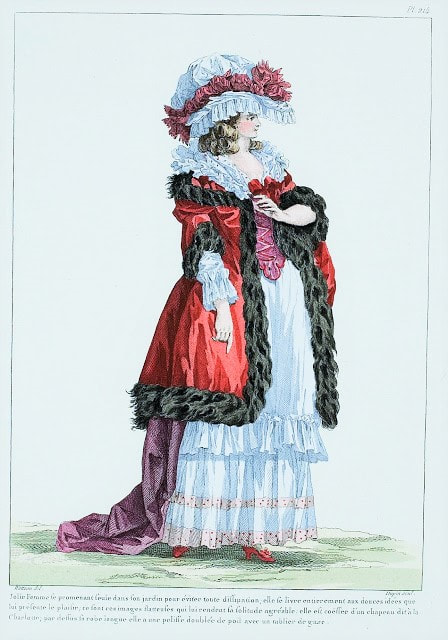




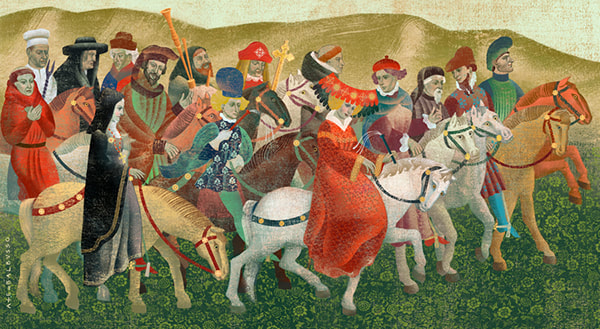




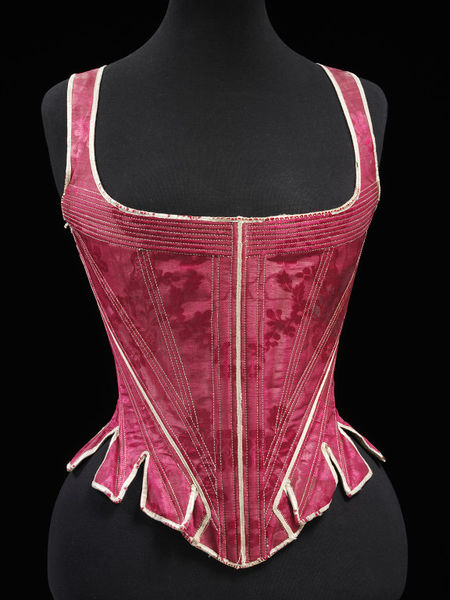




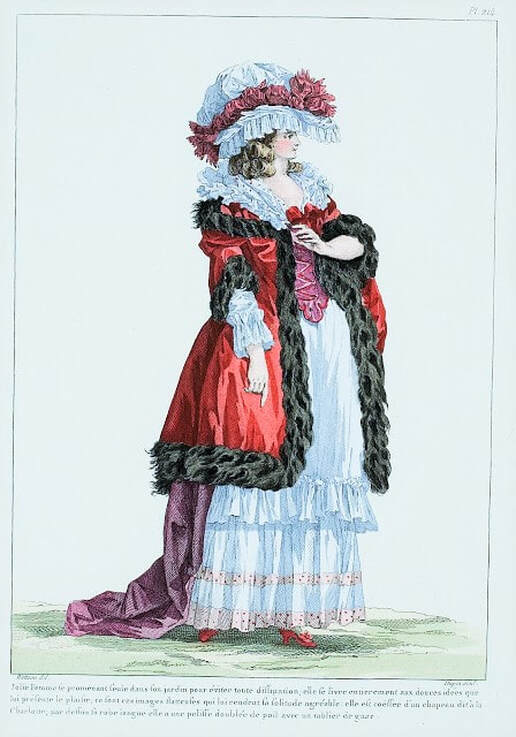

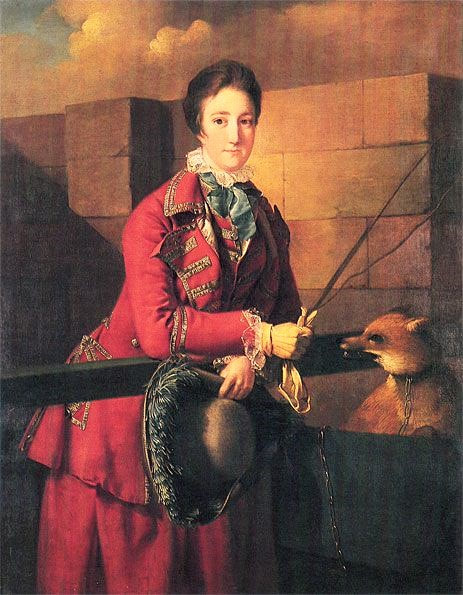










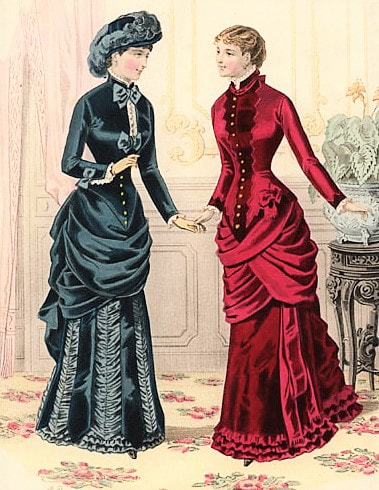
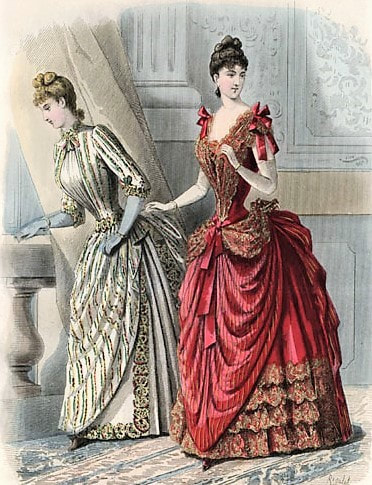
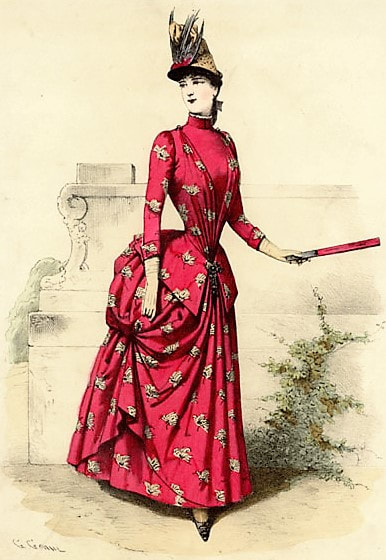





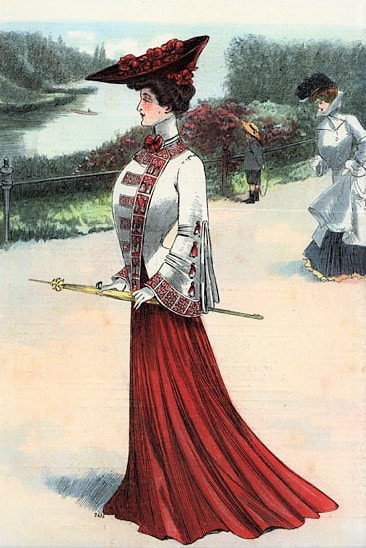








 RSS Feed
RSS Feed